Yoga for Good Posture: Top 5 Poses for Better Alignment
Ever caught your reflection on a shop window only to be surprised at how slouched you were? Or, ended the day with an aching back and sore neck?
These might be signs that your posture needs a little TLC. But don’t worry, yoga is here to the rescue!
In this article, we’ll explore how yoga can help improve your posture and introduce you to the top five poses for better alignment.

This post may contain affiliate links, which helps keep this content free. Please read our disclosure for more info.
Understanding Good Posture and Alignment
Before we dive onto our mats, let’s spend a few moments unpacking the concepts of posture and alignment. At its most basic level, posture is how we hold our bodies when we stand, sit, or move.
But it’s much more than just standing tall or sitting straight. It’s a complex interplay of muscles, bones, and nerves that works to keep us balanced and mobile.
Good posture is all about alignment — it’s the way your head aligns with your neck, how your shoulders stack over your hips, how your spine maintains its natural curves, and how your knees and ankles form a straight line with your hips.
It’s a bit like building a tower. If the blocks are stacked neatly one above the other, the tower stands tall and strong. But if the blocks are off-center or skewed, the tower becomes unstable.
This is where the issues with poor posture come into play. Poor posture isn’t just about not looking your best.

When your body is constantly out of alignment, it can lead to a host of problems such as back pain, neck tension, and decreased flexibility. Your muscles have to work overtime to compensate for the imbalance, leading to strain and fatigue.
Even more concerning is the effect of poor posture on your breathing. When you’re hunched over, your diaphragm — a major muscle involved in breathing — can’t expand fully.
This limits your oxygen intake, making you feel short of breath and potentially impacting your concentration and stress levels.
But there’s good news — yoga can come to the rescue! Yoga is a practice that encourages body awareness, strength, flexibility, and balance. It teaches you to understand your body, to recognize when you’re out of alignment, and how to correct it.
By regularly practicing yoga, you’ll not only develop a better sense of your body but also actively work to improve your posture and alignment. Plus, the stress-relieving benefits of yoga are a lovely bonus!
The Connection between Yoga and Good Posture
Yoga is not just a trendy form of exercise; it’s a practice that has been around for thousands of years, shaping and promoting a holistic approach to health.
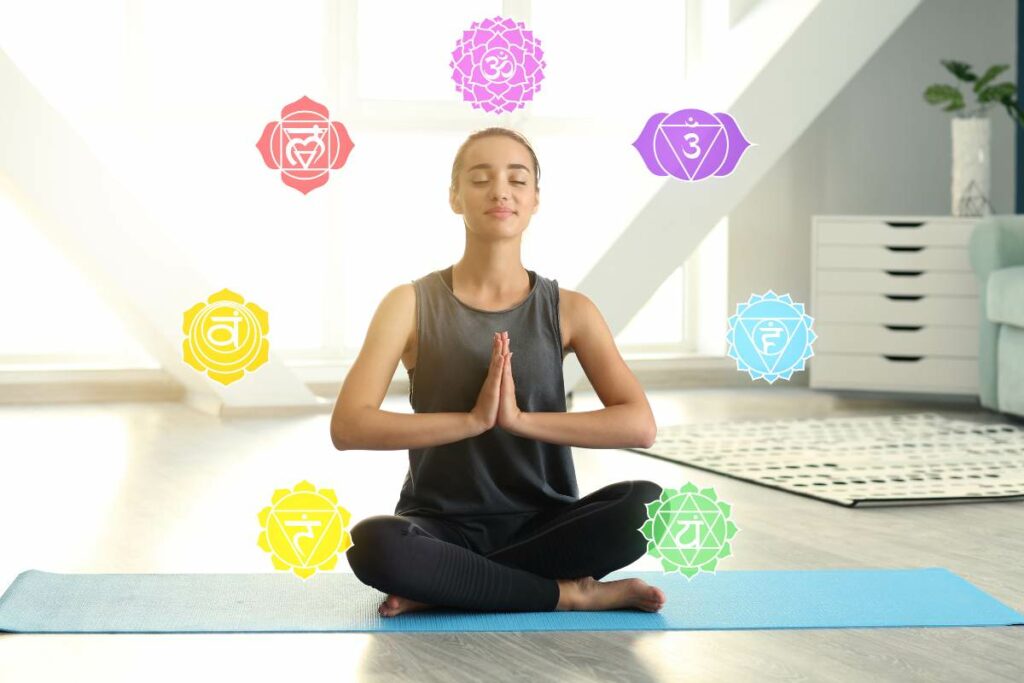
Born in the heart of ancient India, yoga has evolved to become a wellness tool adopted by millions around the globe. But what makes yoga such a fantastic practice for posture?
The answer lies in yoga’s core principles – body awareness, strength, flexibility, and balance.
Body Awareness
Yoga encourages you to listen and connect deeply with your body. It’s a practice that demands your full attention, pushing you to notice how you hold and move your body.
This awareness extends beyond the mat into your everyday life, enabling you to identify when you’re slouching at your desk or hunching over your phone.
In essence, yoga cultivates mindfulness about your posture and the way you move, which is the first step towards improving alignment.
Strength
Strong muscles are essential for maintaining good posture. The various poses and sequences in yoga target different muscle groups, strengthening your core, back, and leg muscles – all critical players in holding your body upright.
By developing your muscle strength, you’re providing your body with the structural support it needs to maintain good posture.
Flexibility
Yoga is well-known for promoting flexibility. Being flexible enables your body to achieve the full range of motion, essential for proper alignment.

It helps to counteract the stiffness that often comes from long hours of sitting or standing in one position, thereby aiding in the prevention and correction of postural issues.
Balance
Good posture isn’t static; it’s a delicate balance that needs constant adjustment and recalibration.
The balance-focused poses in yoga train your body and mind to maintain stability despite shifts and changes. This equilibrium is key to maintaining good posture throughout the day.
Yoga also offers stress relief, which indirectly aids in improving posture. When we’re stressed, our bodies tend to tense up, leading to knots and tightness, especially in the neck and shoulder region.
Yoga, with its emphasis on mindful breathing and relaxation, can help release this tension, promoting better posture.
On top of all these benefits, yoga can also prevent back pain, which is often a result of poor posture. By addressing the root cause and promoting a healthy, aligned posture, yoga is not just treating the symptoms but providing a long-term solution for better posture and overall health.
All things considered, yoga gives you more than just improved posture; it offers a holistic approach to well-being. You’re not just standing taller; you’re standing stronger, more flexible, and more mindful – a triple whammy of benefits!
Top 5 Yoga Poses for Better Posture
You’re all warmed up and ready to get started? Fabulous! Let’s dive into the top 5 yoga poses that will not just help you stand taller, but also make you feel great.
As you go through each pose, listen to your body and don’t push beyond your comfort level. Yoga is about compassion and patience, not competition.
Tadasana (Mountain Pose)

Let’s start with the basics. Tadasana is like the blueprint of good posture. It’s a simple standing pose, but don’t be fooled – it packs a punch! This pose teaches you the art of standing correctly by aligning your body from head to toe.
By regularly practicing Tadasana, you’ll strengthen your core and leg muscles, which provide the necessary support for maintaining good posture. Picture yourself as a mountain – strong, tall, and grounded.
Bhujangasana (Cobra Pose)
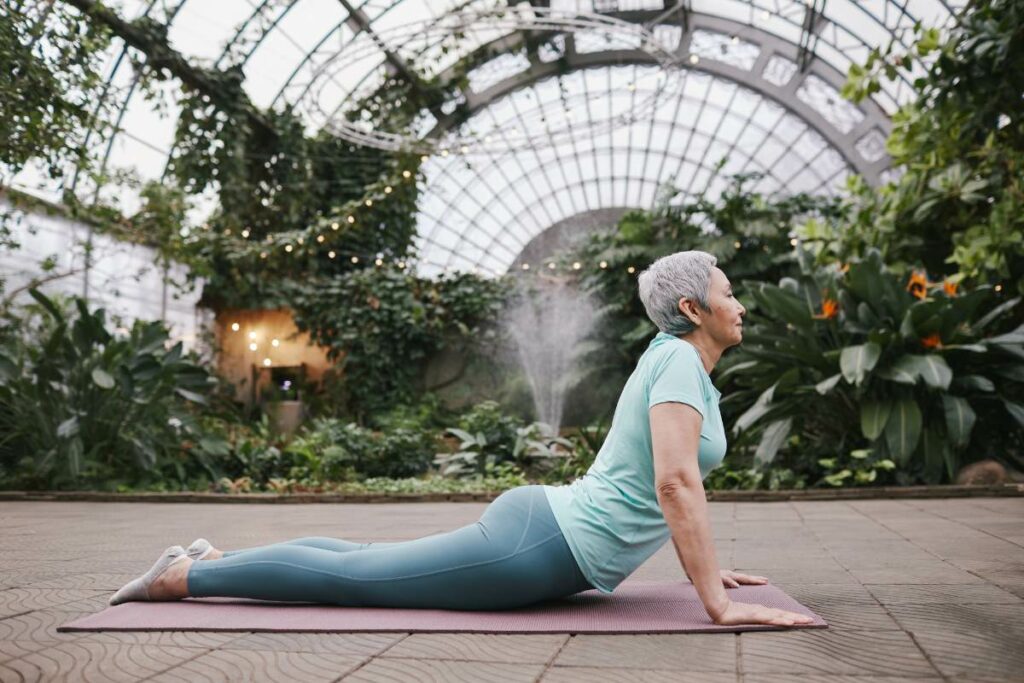
Ever notice how you tend to hunch forward when sitting? Bhujangasana is here to counteract that.
This backbend stretches your chest and shoulders while strengthening your spine. It encourages a natural, healthy alignment, helping to reset any hunching or slouching tendencies.
Plus, it’s an excellent pose for reducing tension and fatigue in the lower back.
Adho Mukha Svanasana (Downward-Facing Dog)

This pose is a yoga staple, and for good reason. It offers a fantastic full-body stretch while strengthening your arms, legs, and back – all crucial for good posture.
As an added perk, it helps to open up your chest, improving breathing and further aiding in alignment. So, go ahead and imagine yourself as a playful, stretching dog!
Balasana (Child’s Pose)

Yoga isn’t all about the active poses; restorative postures like Balasana are equally essential. This sweet little break lets you rest while gently stretching your back, hips, and neck.
It’s a reminder that good posture isn’t about stiffness but about flexibility and ease in the body.
Ustrasana (Camel Pose)
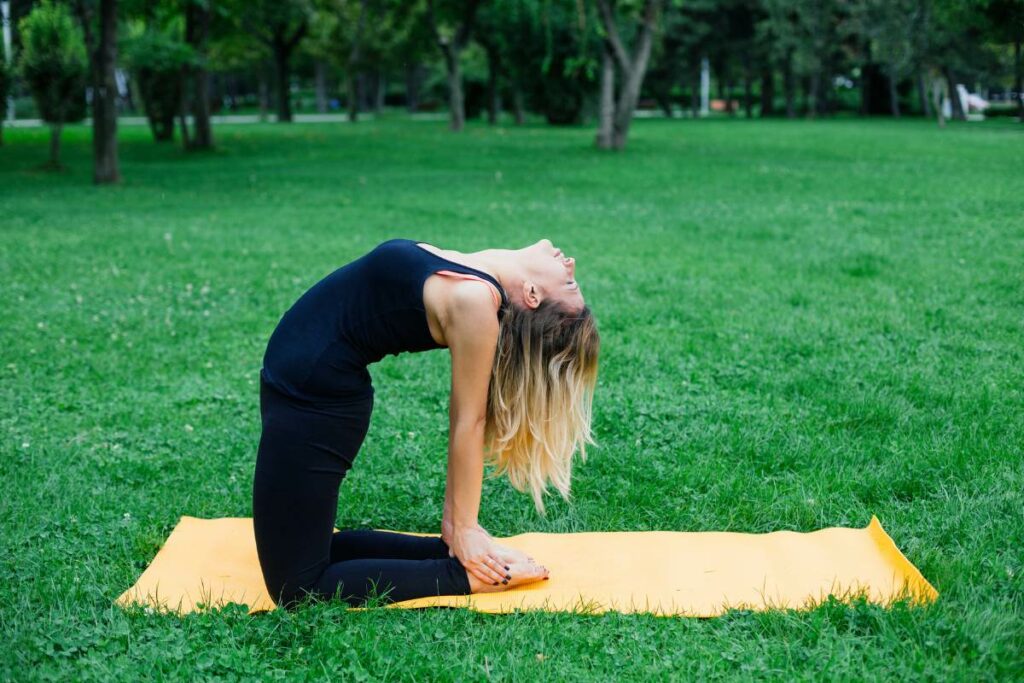
Ready for a challenge? Ustrasana, or Camel Pose, is a deeper backbend that opens up your chest, counteracting the tendency to slouch forward.
While it’s a bit challenging, the rewards are plenty! It strengthens your back muscles and stretches your abdomen, helping to support your spine’s natural curvature.
Remember to approach this pose with caution and never force the backbend.
Incorporating these Poses into a Daily Routine
You’ve now armed yourself with the knowledge of these five wonderful yoga poses for better posture. The question is, how do you bring these poses off the mat and into your daily routine?
Well, consistency is the secret sauce of success in yoga. Just as one healthy meal doesn’t make you fit, practicing yoga once in a blue moon won’t transform your posture.
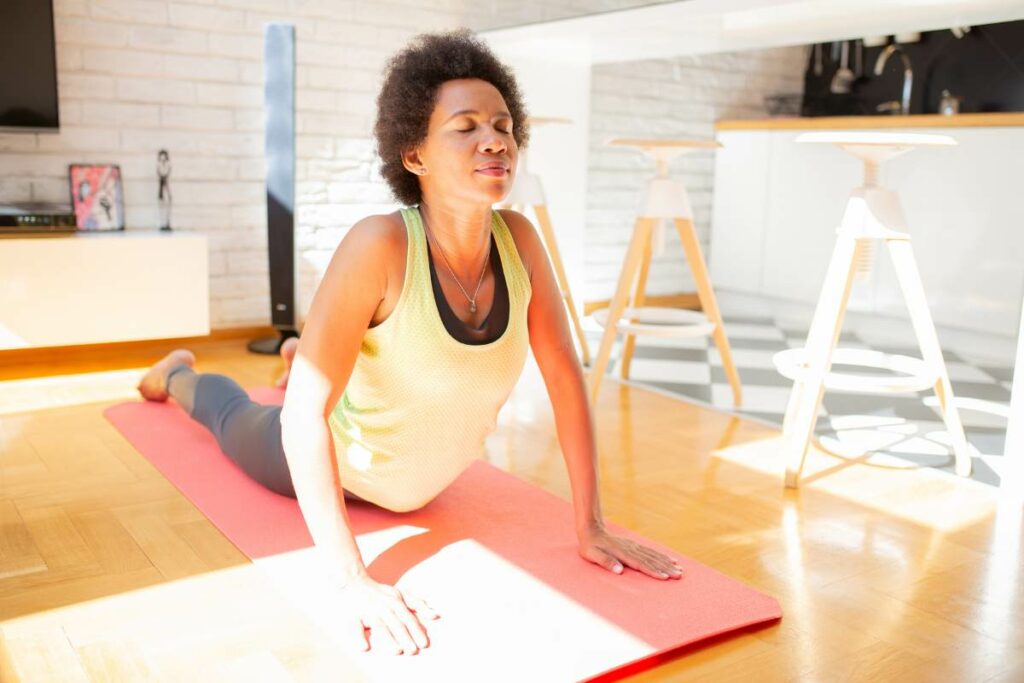
Instead, incorporating these poses into your daily life can create a positive and lasting impact on your body’s alignment and overall health.
Start Small: Don’t be disheartened if you can’t dedicate an hour each day to a full-blown yoga practice. Even just a few minutes every day can bring about noticeable changes. Start small — you could begin with just one pose a day, gradually adding more as you grow more comfortable.
Make It a Habit: Try to associate your yoga practice with a specific part of your day. Perhaps you could start your morning with a stretch in Tadasana or wind down your day with a relaxing Child’s Pose. By linking yoga to your daily habits, you make it a seamless part of your routine.
Listen to Your Body: This can’t be stressed enough. Yoga isn’t about pushing through pain or striving for picture-perfect poses. It’s about tuning into your body’s needs and capabilities. If a pose feels uncomfortable or causes strain, ease out of it.
Quality Over Quantity: It’s better to do a few poses correctly than many with poor form. Pay attention to your alignment and make sure you’re doing the poses correctly to avoid injury. Remember, yoga is not a race; it’s a journey. There’s no prize for finishing first or doing the most poses.
Seek Professional Guidance: If possible, attend a few yoga classes or workshops (online ones work too). A trained instructor can correct your form and provide personalized tips. As you grow more confident, you can continue your practice at home.
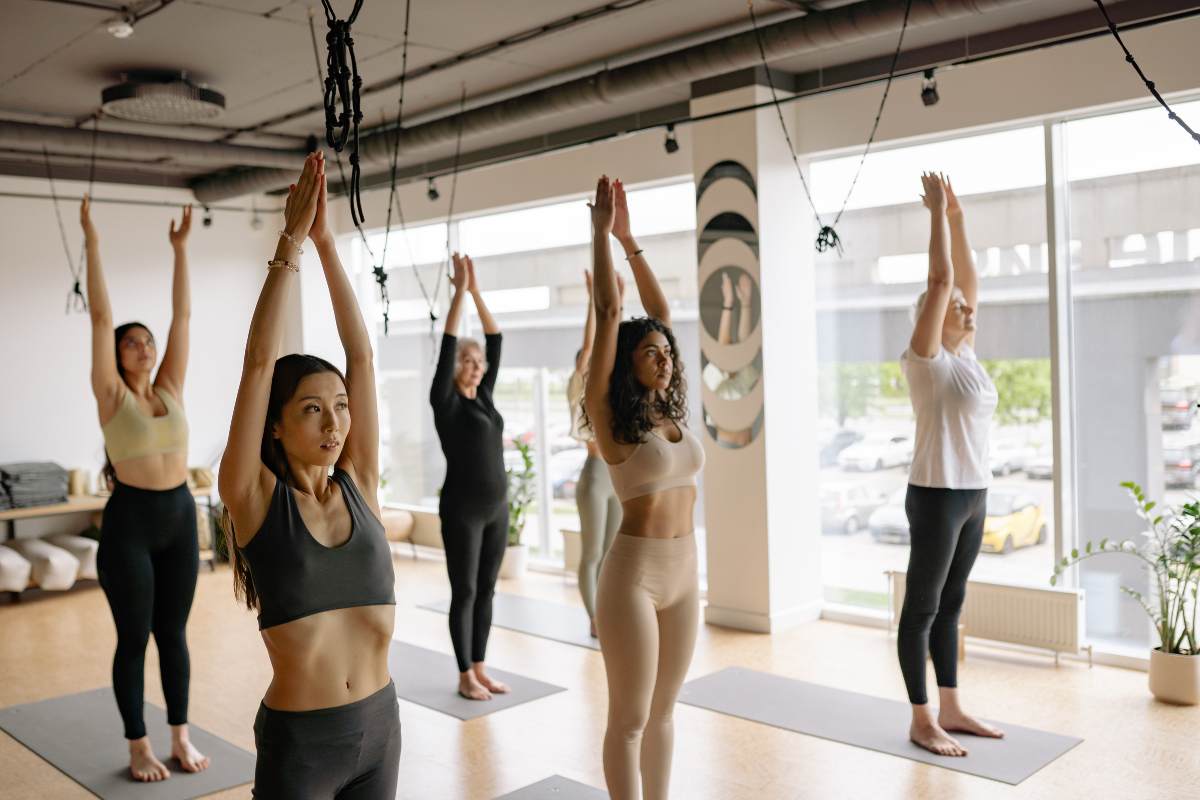
Mindfulness Matters: Remember, yoga isn’t just about the physical postures; it’s a holistic practice. As you perform these poses, focus on your breath, relax your mind, and be fully present in the moment. This mindfulness can translate into greater body awareness even outside of your yoga practice, contributing to improved posture all day long.
Revitalize Your Body with Yoga and The Yoga Fat Loss Bible
As we bring our exploration of yoga for better posture to a close, let’s not forget about the numerous other benefits yoga brings to our lives.
Beyond improving your alignment, yoga can also aid in weight loss, increase flexibility, tone your body, and relieve aches and pains. And if you’re wondering where to start, the Yoga Fat Loss Bible has you covered!

The Yoga Fat Loss Bible is a comprehensive guide designed to kickstart your journey into yoga and transform your health. It’s not just about losing weight; it’s about fostering a holistic change in your lifestyle, promoting overall wellness.
This guide provides an easy-to-follow, step-by-step plan that helps you lose weight, get flexible, tone your body, and relieve your aches and pains — all with yoga — in as little as 14 days!
The best part? You don’t have to be a seasoned yogi to follow this plan. Whether you’re a complete beginner or someone with a little experience, this guide caters to all levels.
So, there you have it, folks! We’ve not only explored how yoga can help improve your posture and what alignment means but also introduced you to a fantastic tool — the Yoga Fat Loss Bible — that can assist you in taking your yoga practice to the next level.
Now the ball is in your court! Grab a mat, open your heart and mind, and start exploring the transformative power of yoga.
Whether you aim to stand taller, lose weight, or simply find a moment of calm in your busy day, remember that every step on the yoga mat takes you closer to your goal. Here’s to a healthier, happier you!

